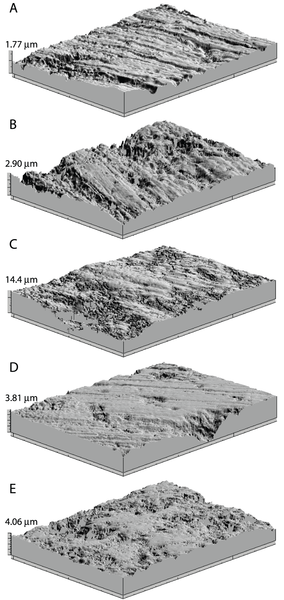The saber-toothed cat, Smilodon fatalis, and American lion, Panthera atrox, were among the largest terrestrial carnivores that lived during the Pleistocene, going extinct along with other megafauna ~12,000 years ago. Previous work suggests that times were difficult at La Brea (California) during the late Pleistocene, as nearly all carnivores have greater incidences of tooth breakage (used to infer greater carcass utilization) compared to today. As Dental Microwear Texture Analysis (DMTA) can differentiate between levels of bone consumption in extant carnivores, we use DMTA to clarify the dietary niches of extinct carnivorans from La Brea. Specifically, we test the hypothesis that times were tough at La Brea with carnivorous taxa utilizing more of the carcasses. Our results show no evidence of bone crushing by P. atrox, with DMTA attributes most similar to the extant cheetah, Acinonyx jubatus, which actively avoids bone. In contrast, S. fatalis has DMTA attributes most similar to the African lion Panthera leo, implying that S. fatalis did not avoid bone to the extent previously suggested by SEM microwear data. DMTA characters most indicative of bone consumption (i.e., complexity and textural fill volume) suggest that carcass utilization by the extinct carnivorans was not necessarily more complete during the Pleistocene at La Brea; thus, times may not have been “tougher” than the present. Additionally, minor to no significant differences in DMTA attributes from older (~30–35 Ka) to younger (~11.5 Ka) deposits offer little evidence that declining prey resources were a primary cause of extinction for these large cats.

Three-dimensional photosimulations of microwear surfaces of all extant and extinct carnivorans analyzed.
Examples include: (A) A. jubatus (AMNH 161139), (B) P. leo (USNM236919), (C) C. crocuta (AMNH 83592), (D) P. atrox (LACMHC 6996), and (E) S. fatalis (LACMHC 2002-298).
doi:10.1371/journal.pone.0052453.g001
Citation: DeSantis LRG, Schubert BW, Scott JR, Ungar PS (2012) Implications of Diet for the Extinction of Saber-Toothed Cats and American Lions. PLoS ONE 7(12): e52453. doi:10.1371/journal.pone.0052453
Editor: Anjali Goswami, University College London, United Kingdom



 September 1st, 2013
September 1st, 2013  Riffin
Riffin  Posted in
Posted in  Tags:
Tags: 